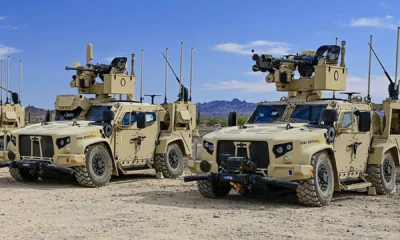Middle East
Israel to Refrain From Attacking Iran’s Nuclear Sites, Focus on Military Targets, Sources say
Israel’s Calculated Response to Iran: A Shift Away from Nuclear Sites Toward Military Targets
As Israel faces heightened tensions in the region, a new military calculus seems to be emerging. Following a report from The New York Times, Israel is expected to refrain from directly targeting Iran’s nuclear facilities in its response to recent missile attacks. Instead, the focus is shifting toward military and intelligence sites within Iran—an indication of the broader strategic priorities guiding the Israeli government’s decisions. This move, while practical, marks a significant departure from decades of Israeli rhetoric centered on neutralizing the existential threat posed by Iran’s nuclear ambitions.
In the aftermath of Iran’s second major missile strike on October 1, which saw over 180 ballistic missiles aimed at Israeli air force bases and other sensitive locations, expectations for an aggressive Israeli counter-strike on Iran’s nuclear infrastructure have risen sharply. However, insiders suggest that this moment may not represent the long-anticipated opportunity to disable Tehran’s nuclear program.
The Goals of War: Why Israel is Taking a Measured Approach
According to sources close to Israel’s security cabinet, the decision to avoid striking Iran’s nuclear facilities is rooted in the wider goals of the ongoing conflict. The most immediate objective is clear: defeating Hamas in Gaza and restoring a sense of security along Israel’s northern border with Lebanon, where Hezbollah remains a constant threat. These aims, critical to Israel’s internal stability, would be jeopardized by an escalation with Iran that could lead to a broader regional conflict—something Israeli leaders are determined to avoid.
The rationale behind this approach is straightforward. Attacking Iran’s nuclear program could provoke a massive response from Tehran, dragging Israel into a full-scale war with one of the Middle East’s most powerful militaries. Such a conflict would not only distract from efforts to subdue Hamas but also potentially ignite Hezbollah and other Iranian proxies into action, compounding the security challenges Israel is already facing on multiple fronts. As one Israeli official pointed out, Iran’s recent missile strike was likely an attempt to “rebalance” its deterrence capabilities following Israel’s successes against Hezbollah and Hamas.
A Changing Strategic Landscape
For years, Israel has prepared for the possibility of taking direct military action against Iran’s nuclear infrastructure, with both Prime Minister Benjamin Netanyahu and Defense Minister Yoav Gallant framing the elimination of Iran’s nuclear threat as a primary goal of their tenure. However, the complexities of this moment have led to a reassessment of priorities. While Israeli officials continue to emphasize the importance of countering Iran’s ambitions, the immediate focus has shifted toward a broader set of military targets, including ballistic missile and drone facilities, as well as intelligence hubs connected to recent attacks on Israel.
The decision not to target nuclear sites, despite Iran’s recent provocations, represents a recalibration of Israel’s strategic objectives. Some sources suggest that while the opportunity to degrade Iran’s nuclear program is significant, it would not align with the immediate goals of the current war. Instead, Israel’s leadership appears to be concentrating on maintaining regional stability and avoiding a confrontation that could spiral beyond its control.
The Risks of Restraint
This measured approach, however, comes with its own set of risks. Critics argue that Israel may be missing a rare chance to strike a decisive blow against Iran’s nuclear ambitions. Despite the security cabinet’s concerns about a broader conflict, some observers believe that the current moment—a time when Iran has directly attacked Israel twice in six months—may represent a once-in-a-generation opportunity to target its nuclear program. These proponents worry that, by not taking action now, Israel may allow Iran to continue advancing toward the development of a nuclear weapon, increasing the long-term threat to the Jewish state.
In this context, the debate over Israel’s military strategy reflects a deeper tension between short-term security needs and long-term existential concerns. On the one hand, avoiding an all-out war with Iran allows Israel to continue focusing on its immediate conflicts with Hamas and Hezbollah. On the other, the restraint shown by Israeli leaders may leave Tehran emboldened, particularly if its nuclear infrastructure remains untouched.
The Role of the U.S. and Western Allies
Complicating matters further is the question of whether Israel could effectively dismantle Iran’s nuclear program without outside assistance. Many U.S. and Western military experts have long argued that Israel lacks the necessary firepower to destroy Iran’s deeply buried nuclear sites, such as the Fordow facility. Without access to the kind of bunker-busting munitions that only the U.S. possesses, Israel would need to rely on a sustained bombing campaign—an option that carries its own logistical and geopolitical challenges.
Nonetheless, recent Israeli successes in underground warfare—such as the September 27 assassination of Hezbollah leader Hassan Nasrallah, which involved dropping 85 bombs to collapse his underground bunker—suggest that a more sustained attack on Iranian nuclear sites could still achieve meaningful results. While Fordow is much deeper underground than Nasrallah’s hideout, some Israeli officials believe that repeated strikes could cause enough damage to significantly slow Iran’s nuclear progress, even if the facilities are not completely destroyed.
What Comes Next for Israel and Iran?
As the situation unfolds, Israel’s restraint may be tested by further provocations from Iran or its regional proxies. The question of whether to escalate the conflict remains a central point of debate among Israeli policymakers, particularly as the international community grapples with the potential fallout from any direct strike on Iran’s nuclear program. While some Western officials continue to urge caution, others support a more aggressive approach, arguing that Iran’s willingness to attack Israel directly—combined with its continued defiance of international nuclear regulations—poses a grave and growing threat.
For now, Israel appears committed to a more cautious strategy, focused on degrading Iran’s military capabilities without triggering a larger regional war. But the underlying tensions between Tehran and Jerusalem show no signs of abating. As the world watches, Israel’s choices in the coming months will have profound implications not only for its own security but for the broader Middle East—and the global order.
The road ahead is fraught with uncertainty, but one thing is clear: the stakes have never been higher. Whether Israel’s decision to refrain from attacking Iran’s nuclear sites proves to be a wise course of action or a missed opportunity will be judged by the outcomes of the conflicts still to come.
Comment
Iraq Blinks, Militias Advance: Iran’s Axis Was Never Broken

Iran-Backed Militias Tighten Grip on Iraq, Underscoring Tehran’s Enduring Regional Strategy.
When Iraq’s government announced this week that it would freeze assets linked to Lebanese Hezbollah and Yemen’s Houthi movement, the decision was initially framed as a quiet but meaningful assertion of sovereignty. Baghdad, the narrative went, was finally drawing a line between the state and Iran’s regional web of militias.
The illusion lasted only hours. The prime minister’s media office abruptly reversed the move, blaming an unspecified “error.” The episode revealed not Iraqi resolve, but its limits.
The rapid climbdown offered a clear reminder that Iran-backed militias remain deeply embedded in Iraq’s political system—and retain the leverage to block any step that threatens their interests or those of Tehran. This is no longer just an internal Iraqi concern. With Syria weakened after two years of war and Israeli strikes, Iraq has become a central pillar in Iran’s effort to preserve and rebuild its regional axis.
Israeli security planners have long warned that militias aligned with Iran possess missile and drone capabilities positioned in Iraq’s vast western deserts. From there, Israel’s northern regions are less than 400 kilometers away.
In the event of renewed confrontation between Israel and Iran, those areas could serve as a forward launch zone. While Iraqi militias largely stayed on the sidelines after limited action in late 2023, there is little reason to assume restraint would hold in a future escalation.
Contrary to the perception that Iran’s proxy network has been decisively weakened, recent political developments in Iraq suggest the opposite. In November’s parliamentary elections, parties tied to Shi’ite militias made significant gains.
Asaib Ahl al-Haq’s Sadiqoun bloc secured 27 seats; the Badr Organization won 18; and Huquq, linked to Kataib Hezbollah, took six. Together, these factions form the backbone of the Coordination Framework, now the dominant force in parliament.
Prime Minister Mohammed Shia al-Sudani, whose bloc lacks a governing majority, depends on this framework to remain in power. Its most influential figure, former prime minister Nouri al-Maliki, has worked systematically to shield militia-linked actors by embedding them within formal political institutions.
The result is a hybrid system in which armed groups convert battlefield influence into legislative authority.
The consequences are structural. Iraq’s state functions, but only within boundaries set by militia power. When critical interests are at stake—sanctions, regional alignment, or Iran’s proxies—the formal government yields.
As one Arab Weekly analysis put it, Iraq now operates as a framework through which powerful political and militia networks rule.
For Israel, the lesson is sobering. The belief that Iran’s regional project has collapsed is premature. It has been damaged, not dismantled. Iraq’s trajectory shows that Tehran’s model—combining elections, paramilitary force, and strategic patience—remains intact, and increasingly effective.
Middle East
Trump Vows Retaliation After US Soldiers Killed in Syria

Trump’s Red Line in Syria: Retaliation, Palmyra, and the Fatal Cost of Reintegrating Extremists.
President Donald Trump’s vow of “very serious retaliation” following the killing of two U.S. Army soldiers and an interpreter in Syria marks more than a response to a single ISIS attack. It signals the re-emergence of a hard red line in American counterterrorism policy—one shaped not only by battlefield violence, but by the dangerous political compromises now defining post-war Syria.
The attack occurred in Palmyra, a city that has become a symbol of both ISIS’s brutality and Syria’s unresolved security collapse. According to U.S. officials, American forces conducting counter-terrorism operations were ambushed by a lone Islamic State gunman. Three additional U.S. personnel were wounded. The attacker was killed, but the damage—strategic and political—was already done.
Trump’s response was direct and characteristically blunt. By framing the incident as an ISIS attack in “a very dangerous part of Syria not fully controlled,” the president implicitly rejected any narrative that Syria’s security environment has stabilized. His warning of retaliation, deliberately left undefined, restores uncertainty as a weapon—one designed to deter not just ISIS remnants, but the permissive environments that allow them to operate.
That environment is inseparable from Syria’s current governing gamble. Palmyra now sits outside the effective control of President Ahmed al-Sharaa, who only months ago met Trump at the White House and secured additional sanctions relief by promising cooperation against ISIS. Yet the reality on the ground tells a far more troubling story. Intelligence and regional reporting indicate that former ISIS operatives have been quietly reintegrated into local security structures under informal agreements designed to reduce insurgent pressure and fill manpower shortages.
The Palmyra attack exposes the fatal flaw in that strategy. When yesterday’s extremists become today’s guards, loyalty becomes transactional and security becomes fragile. The idea that former ISIS commanders can be neutralized through accommodation has repeatedly failed across the Middle East—from Iraq to Libya—and Syria is now paying the price.
This is not merely a Syrian problem. For Washington, the incident cuts to the core of U.S. force protection and alliance credibility. The United States maintains roughly 1,000 troops in Syria, primarily working alongside Kurdish-led Syrian Democratic Forces to prevent an ISIS resurgence. These forces operate in a landscape riddled with overlapping militias, shifting allegiances, and security services built on expediency rather than accountability.
Trump’s warning therefore carries broader implications. Retaliation may target ISIS cells, but it also serves as a signal to Damascus and its partners that cosmetic stabilization will not shield them from consequences if American personnel are endangered. Sanctions relief, normalization, and diplomatic patience are conditional—not entitlements.
The deeper lesson of Palmyra is that ISIS was never defeated as an idea, only displaced as a governing structure. Its networks persist, adapt, and exploit every governance vacuum. Reintegration without justice does not neutralize extremism; it embeds it. When states outsource security to former enemies without transparent vetting or accountability, they trade short-term calm for long-term vulnerability.
Trump’s posture reflects a return to a doctrine where ambiguity favors deterrence, and where U.S. casualties reset the strategic clock. Syria’s leaders now face a stark choice: dismantle the shadow arrangements that blur the line between state authority and extremist accommodation, or accept that American retaliation will arrive without warning and without apology.
Palmyra, once a monument to history, has become a warning. Stability built on compromised foundations does not hold. And in Trump’s Syria, the cost of pretending otherwise is rising fast.
Middle East
US Forces Intercept Chinese Cargo Ship Carrying Military Equipment to Iran
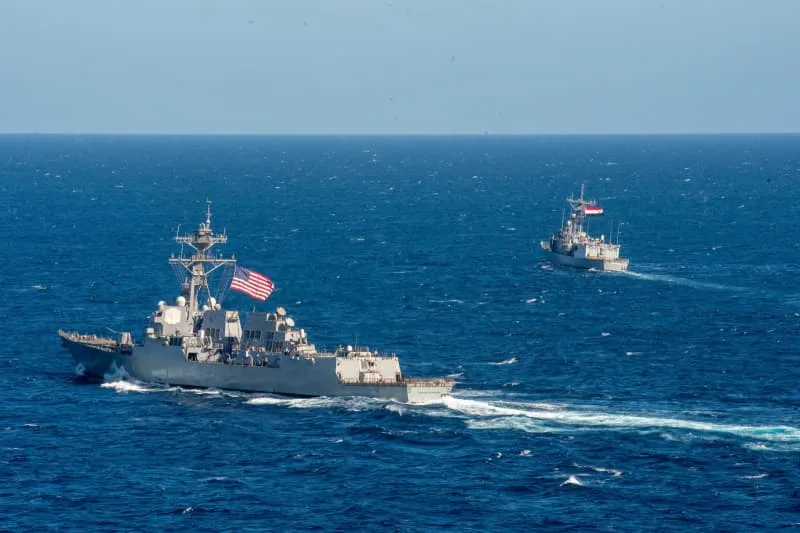
U.S. forces have intercepted and seized military equipment from a Chinese cargo ship bound for Iran, marking one of the most significant disruptions of Iran’s rearmament efforts in years and signaling a sharp escalation in Washington’s response to Beijing’s indirect support for Tehran.
According to officials cited by The Wall Street Journal, the operation took place roughly a month ago in the Indian Ocean, near the coast of Sri Lanka. U.S. operatives tracked the vessel, boarded it at sea, confiscated the military cargo, and then allowed the ship to continue its journey. The mission was conducted quietly and remained undisclosed until now.
The seizure represents the first known interception in years of a Chinese-origin vessel en route to Iran by the U.S. military. Neither the name of the ship nor its owner was released, underscoring the sensitivity of the operation and the broader geopolitical implications surrounding China-Iran cooperation.
The interdiction comes amid mounting intelligence concerns that Iran is rebuilding its missile capabilities with external assistance, despite international sanctions.
In October, CNN reported that European intelligence agencies had identified multiple shipments from China to Iran containing more than 2,000 tons of sodium perchlorate—a dual-use chemical critical to the production of ammonium perchlorate, a key oxidizer used in solid-fuel ballistic missiles.
Ammonium perchlorate is central to Iran’s ballistic missile program, enabling the construction of longer-range and more reliable missile systems. Intelligence officials believe the seized cargo was part of a broader logistical pipeline designed to replenish Iran’s military stockpiles following years of sanctions pressure and recent regional confrontations.
The timing of the operation is particularly significant. In late September, the United Nations reimposed “snapback” sanctions on Iran, restoring comprehensive restrictions aimed at preventing Tehran from advancing nuclear-capable weapons and missile technologies.
The U.S. interception signals an intent to actively enforce those sanctions beyond diplomatic channels.
Strategically, the seizure highlights a widening fault line in global security: the quiet but deepening coordination between China and Iran. While Beijing officially denies military support to Tehran, repeated intelligence findings point to Chinese entities supplying critical materials under civilian or commercial cover, exploiting enforcement gaps across international waters.
For Washington, the operation serves multiple purposes—disrupting Iran’s rearmament, testing China’s tolerance for U.S. interdictions, and signaling that maritime corridors linking Asia to the Middle East are now active theaters in a broader geopolitical contest.
As tensions continue to rise across the Red Sea, the Gulf of Aden, and the Indian Ocean, the interception underscores a stark reality: the global struggle to contain Iran’s military ambitions is increasingly inseparable from the strategic rivalry between the United States and China.
Middle East
Saudi Arabia vs. UAE: How The Gulf Rivalry is Heating Up
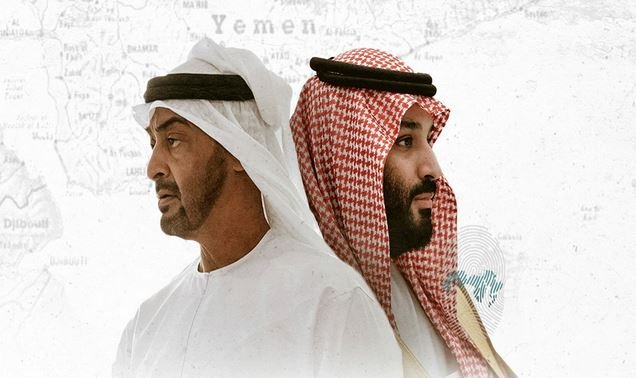
Saudi Arabia vs. UAE: The Quiet Gulf Rivalry Reshaping Middle East Power Politics.
The once-solid partnership between Saudi Arabia and the United Arab Emirates, long seen as the driving force behind Gulf interventionism, is now showing visible cracks. Both governments still project unity in public. Yet diplomatic exchanges, battlefield choices, and economic decisions reveal growing tension. Riyadh and Abu Dhabi are no longer aligned on several of the region’s most pressing strategic issues.
Sudan exposes the rift most clearly. When the 2023 war erupted, Saudi Arabia backed the Sudanese Armed Forces. The UAE, however, faced mounting accusations that it supplied weapons and logistical support to the Rapid Support Forces.
During his recent visit to Washington, Crown Prince Mohammed bin Salman reportedly urged President Donald Trump to pressure Abu Dhabi over its alleged role. That appeal, delivered at the highest diplomatic level, signals a sharp decline in trust.
UAE President Mohammed bin Zayed chose silence, denying involvement while working to keep the dispute from escalating.
Sudan is only one example. The two states split over Yemen when the UAE supported southern separatists, while Saudi Arabia insisted on maintaining a unified Yemeni state.
Energy policy also became a battlefield. In 2021, the UAE resisted Riyadh’s efforts to cut oil production within OPEC.
The disagreement was brief, but it exposed an expanding pattern: each country now prioritizes its national interests, even at the expense of close coordination.
These differences are structural, not accidental. Saudi Arabia’s Vision 2030 and the UAE’s 2031 plan both aim to build diversified, technology-driven economies.
Each country is competing to lead the region in artificial intelligence, logistics, and global investment.
As their ambitions grow, friction becomes harder to avoid. Both are more confident, more assertive, and more committed to independent strategic paths.
The question of Israel adds another layer of strain. The UAE normalized relations in 2020 and prefers to maintain that partnership quietly. Saudi Arabia paused its own negotiations after the October 7 attacks.
Crown Prince Mohammed bin Salman now insists he will recognize Israel only if there is meaningful progress for Palestinians—a position Israel’s leadership rejects.
This divergence places Riyadh and Abu Dhabi on different tracks at a crucial diplomatic moment.
Even with rising tensions, neither country wants a direct confrontation. The Gulf remains vulnerable to shocks from Iran, Israel, and shifting global alliances.
The United States, Turkey, and China all play expanding roles in the region, and both Riyadh and Abu Dhabi recognize that fragmentation would weaken their influence.
Their partnership still stands, built on shared history and overlapping interests. But the era of complete alignment is over. What remains is a managed rivalry—quiet, calculated, and shaped by the evolving power politics of the Middle East.
Middle East
Graham: Saudi Crown Prince’s Survival Depends on Stronger Palestinian Deal
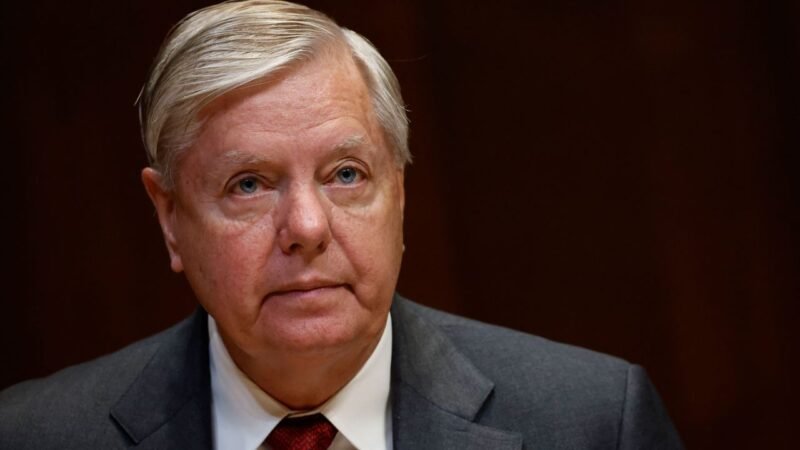
Saudi Crown Prince Mohammed bin Salman will not move toward recognizing Israel unless he can secure a significantly improved outcome for the Palestinians — and his political survival may depend on it, Sen. Lindsey Graham (R-S.C.) warned Wednesday, arguing that the Israel-Hamas war has sharply complicated the once-near-term prospect of formal Saudi-Israeli normalization.
Speaking at The Jerusalem Post’s Washington Conference, Graham delivered one of his bluntest assessments to date. “MBS is not going to recognize Israel until he gets an outcome better for the Palestinians, or he will get killed,” he said, describing the political stakes facing the crown prince as existential.
Any U.S.-brokered agreement, he argued, must balance Palestinian aspirations with Israel’s security needs, without rewarding Hamas or empowering extremist actors.
“I am not asking Israel to reward terrorism,” he said. “I am asking Israel to be open-minded to end the conflict, where Israel is secure and MBS can move his region forward.”
Graham stressed that a viable normalization package must rest on “real security fundamentals,” which, in his view, means neutralizing Iran’s regional proxy network.
“There is no hope for a Saudi-Israel deal unless you do away with Hamas and Hezbollah,” he said. “Neutralize the threat, and then you can talk rationally.”
The senator, long regarded in Israel as one of its strongest advocates in Washington, said the region was on the cusp of a breakthrough before Hamas’s October 7 attack and the subsequent war.
“We were this close,” he said. “We were running the framework.
Then October 7 happened.” He argued that Hamas intentionally filmed its atrocities to harden Israeli public opinion and derail Arab states contemplating diplomatic openings with Israel.
Graham repeated his view that Israel remains central to American strategic interests. “Israel is a good investment for America because we have common values and common enemies,” he said, adding that replicating Israel’s military capabilities would require the United States “to double our military budget.”
He called Israel “the anchor” of U.S. strategy in the Middle East.
On normalization, Graham rejected the idea of an international force stepping in to disarm Hamas. “There is no air force going to disarm Hamas,” he said. “You will find a unicorn quicker. Only Israel can do it.” He urged the international community to impose a firm deadline on Hamas: “Put Hamas on a clock.
If they do not give up their weapons, all bets are off. Send Israel in and wipe them out.”
Turning to Lebanon, Graham said the country has no viable future “as long as it tolerates an armed Hezbollah with the desire to destroy the Jewish state.” He said he is pressing the Trump administration to prepare for coordinated U.S.-Israel action if necessary.
“Build up the Lebanese army and fly with Israel to take this terrorist organization down,” he said.
Graham also unveiled plans for legislation targeting Iran’s energy exports, aiming to penalize countries — including China — that continue purchasing Iranian oil. The measure is designed to constrict Tehran’s ability to fund Hamas, Hezbollah, and other proxies across the region.
Despite the region’s volatility, Graham insisted a rare strategic opening remains within reach if Washington, Riyadh, and Jerusalem can navigate the postwar landscape.
Advanced U.S. weapons for Saudi Arabia, he suggested, could be justified if they deliver a historic diplomatic breakthrough. “It is the best idea in 3,000 years if it gets Saudi Arabia and Israel to make peace,” he said. “Do not let this window close.”
“There is a unity of purpose here,” Graham concluded. “Hamas and Hezbollah are not the future. The Abraham Accords are real. The change in the Arab world is real. Do not miss this moment.”
Comment
Hezbollah’s Vanishing War Machine: Abandoned Tunnel Stuns the World

The Lebanese Armed Forces opened one of Hezbollah’s underground tunnels to international journalists on Friday, offering a rare glimpse into the group’s concealed military infrastructure in the country’s volatile south.
The visit, organized by the LAF, appeared aimed at demonstrating both the army’s expanding control in areas long dominated by Hezbollah and the scale of the challenge it faces as tensions with Israel continue to rise.
The tunnel, dug into the hillside of Wadi Zibqin, sits in one of Hezbollah’s most entrenched strongholds just north of the Israeli border. Inside, reporters walked through a narrow passage that led to what resembled a small medical station, a rudimentary kitchen, preserved food supplies, water tanks, electrical wiring, and a ventilation system — evidence of a site designed to sustain fighters for extended periods.
No Hezbollah personnel were present, and the Lebanese military insisted the position had been abandoned.
Brig. Gen. Nicolas Thabet, who oversees army operations south of the Litani River, moved through the tunnel alongside the media delegation.
He framed the visit as part of a broader effort to reassert state authority in an area where Hezbollah’s influence has been largely unchecked for nearly two decades.
“We will not give up our objectives, whatever the difficulties may be,” he told reporters, describing the terrain as “one of the most dangerous areas in the Middle East” and stressing that the army has “sacrificed greatly.”
The location has already proven deadly. In August, six LAF sappers died when an explosion ripped through a nearby weapons depot believed to contain munitions stored by Hezbollah.
The army says it has since taken control of several former positions that were either struck by Israeli fire or abandoned by fighters.
Friday’s tour came at a moment of renewed tension following the killing of senior Hezbollah commander Haytham Ali Tabatabai in an Israeli airstrike on Beirut’s Dahiyeh district earlier in the week. Tabatabai, considered one of Hezbollah’s most experienced field commanders, played a central role in the group’s operations in Syria and Yemen and was a key node in Iran’s regional network.
Speaking after the strike, Hezbollah Deputy Secretary-General Naim Qassem warned that the group retained “the right to respond” and would choose the timing.
He accused the United States and unnamed Arab states of helping orchestrate what he described as a campaign of “infiltrations” targeting Hezbollah.
“The enemy did everything in its power to end the resistance, but it failed,” Qassem said, casting the group once again as the vanguard against what he called “Israeli-American aggression.”
For the LAF, the tunnel tour was as much an act of messaging as it was a display of access.
By showing the site to foreign media, the army signaled that it is trying — despite limited resources and complicated political constraints — to present itself as a stabilizing actor in a landscape now shaped by Israeli precision strikes, Hezbollah’s internal recalculations, and growing uncertainty over how long the current cycle of escalation can be contained.
Middle East
Houthis Break Away From Iran, Shaking the Axis of Resistance

Iran’s long-standing strategy of projecting power through regional proxy forces is facing an unexpected strain, as senior Iranian officials acknowledge that the Houthis in Yemen have become increasingly difficult to control and, in some cases, openly defiant.
The revelations, reported by The Telegraph, suggest Tehran is struggling to manage what remains of its once-cohesive “axis of resistance.”
According to a senior Iranian official quoted in the report, the Houthis “have gone rogue” and “do not listen to Tehran as much as they used to.” The official said the breakdown extends beyond Yemen, noting that certain Iranian-backed militias in Iraq are also ignoring directives: “Some groups are acting as if we never had any contact with them.”
The internal frustration highlights a shift that began in April, when tensions rose after Iran failed to respond to heavy U.S. airstrikes targeting Houthi positions.
The lack of retaliation angered Houthi commanders, who had expected Tehran to defend its closest remaining proxy following the collapse of Hamas’ operations in Gaza and the decimation of Hezbollah’s leadership in Lebanon under sustained Israeli military pressure.
Tehran has attempted to reassert control. A senior IRGC commander was recently sent to Sanaa, and Quds Force officer Abdolreza Shahlaei — a high-value U.S. target with a $15 million bounty on his head — has reportedly been redeployed to Yemen to press the group back into alignment. But Iranian officials told The Telegraph that these efforts have yet to succeed.
Iranian influence faltered further as the Houthis tightened their grip on northern Yemen, expanded missile and drone capabilities, and diversified revenue streams.
The group now runs an extensive network that includes tax collection, aid diversion, drug and arms trafficking, and disruptive operations along key Red Sea shipping routes. Its mountainous hideouts continue to shield equipment despite years of U.S. and allied airstrikes, estimated to have cost more than $7 billion.
Former Yemeni diplomat Mahmoud Shehrah told The Telegraph that the Houthi movement is driven primarily by its own ideology rather than external direction. “The Houthis don’t need someone to encourage them.
This is about their beliefs,” he said, emphasizing that the group maintains its own political and religious framework even as coordination with Tehran persists.
Internal reports cited by regional analysts describe rising tensions inside the Houthi leadership itself, with IRGC advisers unable to reconcile factional disputes or strategic disagreements.
The Defense Line report described the Houthis as facing “a crisis of options and priorities,” adding that the group’s behavior increasingly mirrors “the confusion that exists in Tehran.”
Analysts suggest that while Iran and the Houthis share strategic interests — including pressuring U.S. partners and complicating maritime security — their goals are no longer perfectly aligned.
Dr. Bader al-Saif of the University of Kuwait likened the relationship to a franchise model: “Both Iran and the Houthis benefit from working together, but they also have divergent interests. They’ll pursue those interests whenever they see fit.”
The growing disconnect raises new questions about the future of Iran’s regional influence. A network once defined by ideological cohesion and coordinated action now shows signs of fragmentation — at a moment when Tehran is increasingly isolated diplomatically and under pressure from intensified U.S. and regional military operations.
Middle East
Saudi Crown Prince Rejects Trump Request to Advance Normalization With Israel

Saudi Crown Prince Mohammed bin Salman declined a direct request from President Donald Trump to advance toward normalization with Israel during their White House summit last month, according to U.S. officials familiar with the talks.
The exchange, first reported by Axios, underscores the limits of Washington’s push to expand the Abraham Accords at a moment when the Middle East remains deeply fractured and the Israeli–Palestinian conflict unresolved.
The officials said Trump pressed the Crown Prince repeatedly on joining the regional normalization framework, prompting what they described as a “tense” back-and-forth.
Saudi Arabia’s position, however, did not shift. According to the report, Mohammed bin Salman reiterated that normalization is impossible without a comprehensive political agreement establishing a Palestinian state based on the 1967 borders, with East Jerusalem as its capital — a stance Riyadh has maintained for more than two decades.
“The Crown Prince dealt firmly with Trump’s request and held fast to his position,” Axios wrote, quoting two U.S. officials who described Mohammed bin Salman as a “strong leader” in the discussion.
The meeting took place on Nov. 18 during the Crown Prince’s official visit to Washington, a trip framed by both governments as a strategic recommitment to bilateral ties. While the White House offered an exceptionally warm reception, the normalization issue remains one of the sharpest points of divergence between the two leaders.
At a press conference following the talks, Mohammed bin Salman publicly reaffirmed the Kingdom’s longstanding conditions for peace with Israel, emphasizing that Saudi Arabia supports regional stability but will not move forward without what he called a “clear and credible plan” for a two-state solution.
Riyadh has consistently argued that a just settlement for the Palestinians is the foundation for any broader regional peace.
The Kingdom has also positioned itself as a central mediator in regional diplomacy, insisting that political dialogue — rather than unilateral agreements — offers the only sustainable path to resolving the Middle East’s long-running conflicts.
The report suggests that while Trump seeks a diplomatic breakthrough that could reshape the region, Saudi Arabia’s leadership remains unwilling to break with its principle: no normalization without Palestinian statehood.
-

 Analysis10 months ago
Analysis10 months agoSaudi Arabia’s Billion-Dollar Bid for Eritrea’s Assab Port
-

 Opinion17 years ago
Opinion17 years agoSomaliland Needs a Paradigm Change: Now or Never!
-
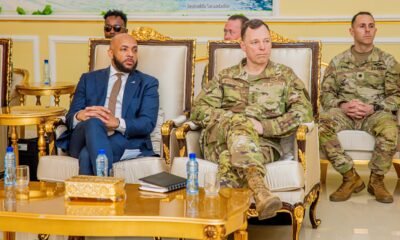
 Interagency Assessment4 days ago
Interagency Assessment4 days agoTOP SECRET SHIFT: U.S. MILITARY ORDERED INTO SOMALILAND BY LAW
-

 ASSESSMENTS9 months ago
ASSESSMENTS9 months agoOperation Geel Exposes the Truth: International Community’s Reluctance to Embrace Somaliland as a Strategic Ally
-

 Somaliland11 months ago
Somaliland11 months agoSomaliland and UAE Elevate Ties to Comprehensive Strategic Partnership
-

 EDITORIAL1 year ago
EDITORIAL1 year agoDr. Edna Adan Champions the Evolving Partnership Between Somaliland and Ethiopia
-
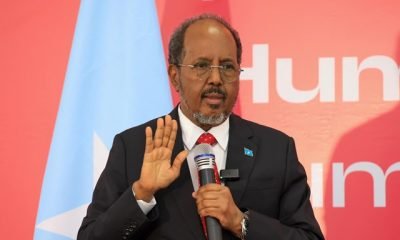
 ASSESSMENTS6 months ago
ASSESSMENTS6 months agoA Critique of the Hassan Sheikh Mohamud Administration and the Halane Enigma
-

 Africa2 years ago
Africa2 years agoHow Somaliland Could Lead the Global Camel Milk Industry












